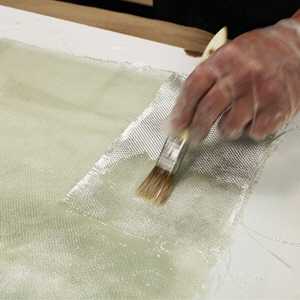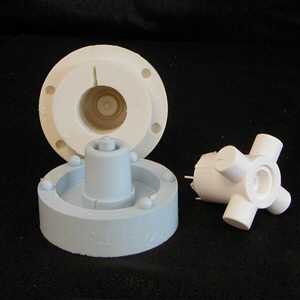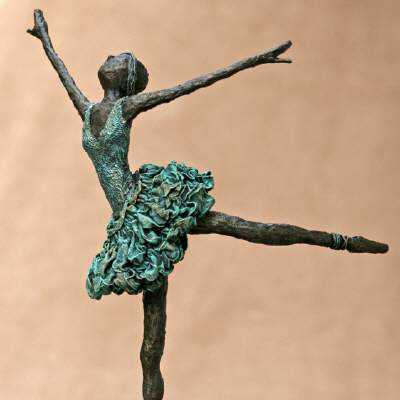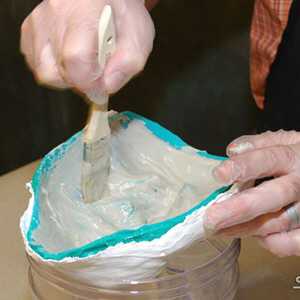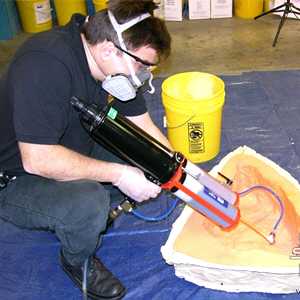- Inicio
- 3D Printers and accessoires
- Moldes y Réplicas
- Siliconas de Estaño
- Siliconas de Platino
- Gomas de Poliuretano
- Alginato
- resinas de Poliuretano
- Espuma de Poliuretano
- Epoxi
- Látex
- Mask Making Latex
- Mold Making Latex
- FormX Elastica
- Monster Makers Kit de Espuma de Látex
- Monstermakers Mask making latex RD-407
- Monstermakers additives & Components
- Holden's HX-200™ Coating/Dipping Latex
- Holden's Brushable HX- Body Latex™
- Holden's Mold Making Latex HX-80™
- Holden's Mold Making Latex High Viscosity HX-974™
- Holden's Mask Making Latex - Pourable HX-407™
- Holden's Mask Making Latex - Brushable HX-807™
- Holden's Cosmetic Latex™
- Holden's Frisket Mask Latex
- Holden's HX-Injection Medium™
- Latex Accessories
- Latex Pigments
- Latex Paint
- Latex Thickener
- Yeso y Hormigón
- Poliester
- AcrylCast
- Fundición Prince August
- Jesmonite sistema acrílico
- Modelar
- Buddy Rhodes Sistema de Hormigón
- Sellar y Despegar
- Pigmentos
- Jesmonite Pigments
- Pure Pigments
- Ultra Fine Pigments
- Silc Pig™ pigmentos
- Glow Worm™ Pigmentos
- Cryptolyte™
- Silc Pig™ Eléctrico
- SilTone
- SilTone Kits
- FuseFX pigmentos de silicone
- Silicone Coloring System S.A.M
- Key-Pigments Silicone Pigments
- Flock fibras
- Latex Pigments
- Polyester Pigmentos
- UVO Pigmentos resistentes al UV
- Tintes SO-Strong™
- Tintes Ignite™
- Real Metal Powders
- Faux Metal Powders
- Cast Magic™ Polvos
- Pinturas
- Rellenos & Refinamiento
- Aditivos
- Disolventes y diluyentes
- Adhesivos
- Herramientas
- Equipos
- Maquillaje
- máscara de goma pintura de grasa
- Skin Illustrator Paletas
- Skin Illustrator líquido
- Fleshtone 60ml
- Fleshtone 120ml
- Dark Fleshtone 60ml
- Dark Fleshtone 120ml
- FX 60ml
- FX 120ml
- FX 240ml
- Complexion 60ml
- Complexion 120ml
- Alchemy 60ml
- Alchemy 120ml
- Grunge 60ml
- Grunge 120ml
- Grunge 240ml
- Mardi Gras 60ml
- Mardi Gras 120ml
- Necromania 60ml
- Mekash Colors 60ml
- Clear Gloss 60ml & 120ml
- Glo-Worm 60ml & 120ml
- Tattoo Classic 60ml & 120ml
- Sunburn
- Alphabetical all
- Skin Illustrator Individual
- Skin Illustrator Glazing Gels
- Skin Illustrator Concentrates
- Skin Illustrator Glazing Spray
- Skin Illustrator Mouth FX
- Allied FX (Blue Bird)
- RipperFX Palettes
- Stacolor Paletas de Maquillaje
- PAX - Pinturas Thom Suprenant
- Tattoo
- MaqPro Farde Palettes
- MaqPro Make-Up Mixer
- MaqPro Creamy
- Pinceles Maquillaje
- MaqPro Bruise Gel
- Old Age Stipple
- Sponges and Applicators
- Stamps & Molds
- Head Armatures
- FormX Tools
- Kryolan maquillaje
- efectos especiales
- material protésico
- Ayuda para elegir
- FormX Academy
- Marcas
- Literature
Forton™ VF-812 /218 kg

Forton™ MG or FMG is a four component system which consists of an alpha gypsum blended with three specialty additives. FMG is based on the VF-812 water based polymer emulsion (50% solids) and greatly enhances the physical properties of alpha gypsum products. VF-812 drastically reduces water permeability, making it suitable for both interior and exterior applications (for exterior use, product must be sealed – see “Finishing” section).
The Forton™ MG system is easy to use and can be cast solid, rotationally cast, layed up by hand with glass fiber or sprayed. Fully cured pieces can be painted, sanded, machined and polished. FMG is used to make lightweight pieces that are very strong and water-resistant. Applications include making architectural elements, reproducing sculpture and special effects. Forton™ MG or FMG is a four component system which consists of an alpha gypsum blended with three specialty additives. FMG is based on the VF-812 water based polymer emulsion (50% solids) and greatly enhances the physical properties of alpha gypsum products. VF-812 drastically reduces water permeability, making it suitable for both interior and exterior applications (for exterior use, product must be sealed – see “Finishing” section).
The Forton™ MG system is easy to use and can be cast solid, rotationally cast, layed up by hand with glass fiber or sprayed. Fully cured pieces can be painted, sanded, machined and polished. FMG is used to make lightweight pieces that are very strong and water-resistant. Applications include making architectural elements, reproducing sculpture and special effects.
Cure Time 90 minutes - Color Bright White - Ultimate Tensile 5,100 psi - Compressive Strength 9,000 psi - Useful Temperature (max) 93,3 C
Features
- Vibrant colors are possible by adding pigments.
- Metal powders (bronze, copper, brass, etc.) can be added to give the look of real metal castings at a fraction of the cost.
- You can duplicate the look of marble or ceramic by adding inexpensive fillers.
- The Forton™ MG system meets ASTM E-84, Class A (or 1) flame rating for building materials.
Forton™ VF-812 is part of the FMG 4 component system. You must purchase MF-415 resin and Forton™ Hardnener separately.
Handling & Storage - Store and use material at room temperature 23°C. These products have a limited shelf life and should be used as soon as possible. Colder temperatures will slow the working/cure times, while warmer temperatures will reduce working times. Individual components should be stored in a dry environment at room temperature. Humid conditions will cause gypsum and resin to lose effectiveness.
Do not allow the liquid VF-812 to freeze.
Mold Preparation - If casting or laying up into a urethane rubber mold, first apply a release agent such as Ease Release™ 2831. Newly mixed Forton™ MG can be released from another Forton™ MG surface using a minimum of three coats of Sonite™ Wax. If you want to paint your finished casting, we suggest using a silicone rubber mold (Mold Max™ Silicone), as no release agent is required to facilitate demold.
Because no two applications are quite the same, a small test application to determine suitability for your project is recommended if performance of this material is in question.
Required Materials - Assemble all components and accessories before you begin. You will need:
- Forton™ MG System Components (See Description Below)
- Measuring Containers
- Mixing Containers
- Weighing Scale (Digital Gram or Triple Beam Balance)
- Mechanical / Power Mixer (Jiffy or Hanson Mixer)
- NIOSH Approved Dust Mask
- Window Screen Or Similar For Filtering Mixture
System Components - The Forton™ MG System consists of four components (an alpha gypsum and three specialty additives).
Component 1 - Alpha Gypsum: You can not use just any gypsum/ plaster product. You must use an Alpha Gypsum such as FGR 95 from USG Corp., Densite HL from Georgia Pacific, Crystacal R from British Gypsum or equivalent.
Component 2 - VF-812: White liquid. 50% solids polymer that crosslinks with Component 3 and gives Forton™ MG water resistant properties.
Component 3 - MF-415 Resin: Fine white powder. Enhances physical properties of the overall mix.
Component 4 - Ammonium Chloride Hardener: Crystalline Powder - looks like sugar. Added as a pH adjustor to ensure the proper crosslinking of the VF-812 and the MF-415 Resin.
MEASURING & MIXING - Important: Use only fresh materials. Old materials (gypsum, polymer) will give inconsistent results.
To minimize dust inhalation, we recommend wearing a NIOSH approved dust mask while weighing and mixing components. An accurate scale (gram scale or triple beam balance) is required to be successful with this product. Do not use a postal, dietary or bathroom scale to weigh components.
Important: Components must be mixed in proper sequence. A power mixer should be used to mix all components.
Step 1: Shake or stir VF-812 well. Dispense required amount into mixing container.
Step 2: Combine All Dry Ingredients: Combine Alpha Gypsum + MF-415 + Hardener by weight into a suitable size mixing container. Mix dry components thoroughly with mixing paddle, power mixer, etc. until well blended. If adding fillers such as bronze powder, blend with dry components before adding to VF-812.
Step 3: Sift dry ingredients into VF-812 liquid and mix all components with a power mixer. Continue mixing until all dry powder components are thoroughly dispersed (minimum 90 seconds).
Mix Design - Component quantities will vary depending on the size of the batch you are making.
Accelerating Forton™ MG - The set and demolding times of the FMG system can be reduced by the use of an accelerator. For hand layup a solution of 450 gr of FMG Accelerator (Aluminum Sulfate) into 4,53 kg of water can easily be made.
Mix the Forton™ MG components into a creamy slurry. Then add the accelerator while mixing. A good starting point is to add 1 tablespoon of accelerator for every 10 lbs of gypsum in the mix. The goal is to add just enough to accelerate the set time but not cause a snap set. Note: Local conditions and mix design can affect the strength of an accelerator. Experimentation will be required.
Retarding Forton™ MG - Some applications may call for a large quantity of Forton™ MG to be mixed and poured in a single mold (mass casting) or for “master batching” (a large amount is mixed and poured into many different molds for production casting). To achieve the longer working time and demold time necessary for these applications, citric acid can be added to the mix. A good starting point is to add citric acid in a quantity of 0.05% of the weight of the gypsum in the mix. The citric acid should be premixed into the VF-812 prior to adding dry components.
POURING & APPLICATION - After thoroughly mixing components, the mixture is ready to be poured into a mold. For best results:
1. Pour a small amount of the Forton™ MG mix into the mold and brush or slush a face coat on all surfaces. This helps to break surface tension and ultimately reduce air bubbles. Tip: Slowly pour the face coat material through a window screen, kitchen colander or equivalent. This helps to eliminate any clumps or unmixed material that could affect the surface finish.
2. After a face coat is applied, the remaining mixture can be slowly poured into the mold.
Further Reducing Entrapped Air - Air bubbles are sometimes a concern with polymer modified gypsums and will vary depending on conditions. There are additional steps you can take to help reduce entrapped air:
1. Vibration - By placing the filled mold on a vibrating table, air will rise and dissipate from the mold surface.
2. Pressure - Requires pressure vessel and compressor. After mixture is poured into mold, place mold in a pressure vessel and subject mixture to 60 PSI (4.2 kg/cm2 ) air pressure for one hour. NOTE: Molds must also have been cured under the same pressure. Otherwise, when the Forton™ MG is pressure cast in the mold, air bubbles trapped in the rubber will compress and the casting will be distorted. Pressure Casting is the only way to completely eliminate bubbles from your mix. Vacuuming material does not work.
Making Architectural Elements - Hand Lay-Up Technique - Forton™ MG can be reinforced with all typical “E” glass fiber reinforcements used in the composites industry. This includes continuous strand surfacing mats up to bi-axial and tri-axial woven glass fiber fabrics. Therefore, Forton™ MG can be used in a wide range of production/laminating processes. ASTM 1355 requires that a minimum of 5% glass fiber reinforcement is used. The flexural properties of Forton™ MG are very responsive to the amount and type of glass fiber reinforcement used, up to 15% of the composite weight.
Hand Lay Up Using Fiberglass Matting - For best results, use ¾ oz. or 1 oz. Chopped Strand Mat or Continuous Strand Mat. Mix Forton™ MG at the “standard” mix design and brush a face coat into a mold. Let set until the appearance starts to turn from shiny to dull, or until you can no longer see your fingerprint if touched. Mix another batch and brush a layer over initial face coat. Lay matting over Alpha Gypsum VF-812 Polymer MF-415 Resin Hardener 100 50 10 0.48 fresh material and let material penetrate matting. Brush with a clean paint brush, applying light pressure over surface to minimize entrapped air. After a uniform coating is attained, apply another layer of matting and brush again. Apply a minimal amount of Forton™ MG - just enough to wet out the surface. Repeat as necessary until 3/8” (10 mm) thickness is attained.
Hand Lay Up Technique Using Chopped Glass - Another technique for making strong, lightweight elements is to mix chopped fiber directly into the Forton™ MG standard mix. Adding chopped fiber takes much less time than layering chopped matte. The chopped fiber will be added to the mix as a percentage of the total weight. Fiber can be added in concentrations of 5% to 12%.
How To Proceed - A face coat should first be applied to the mold surface. This initial coat should be the standard Forton™ MG mix design and contain no fiber. This ensures a fine surface finish with no exposed fibers. Next, a backup mix can be created that will have fibers added. Calculate the total weight of Forton™ MG required for the backup mix. Based on this, calculate and dispense the amount of fiber needed (5%-12% of the total weight). Fibers should be added to a thoroughly mixed Forton™ MG Slurry. Mix thoroughly with a power mixer until fibers are uniformally dispersed. Do not overmix. Apply mixture with gloved hand or spatula over face coat. Another application may be required to attain 3/8” (10 mm) thickness.
Post Finishing - After elements have fully cured, they can be sanded or sand blasted to achieve the desired surface texture. “Wet Sanding” is advisable to minimize dust particles and build up on sand paper.
For Exterior Use, Apply A Sealer - Because the Forton™ MG system substantially reduces the water absorption rate of alpha gypsums, elements made with Forton™ MG are suitable for exterior use. Elements must, however, be sealed with a suitable sealer such as Euclid Chemical Baracade Silane 40 WB or Baracade Silane 100 C. Elements can also be painted with an outdoor acrylic paint.
Making “Cold Cast Bronze” Elements - Reproducing the look of bronze is a common application for Forton™ MG because you can achieve the look of real bronze at a fraction of the cost. For making solid castings, the following proportions will work well. –325 mesh bronze powder is recommended and should be pre-mixed with dry Forton™ MG components prior to adding to VF-812.
Optional: Pigments can be added to the system to affect the finished look of the cold cast part. For example, adding a dark pigment (black or dark brown) to the mix will give the final casting added definition and dimension when working with bronze powder.Powdered iron oxide pigments and SO-Strong™ color tints work well with the Forton™ MG system.
etal powders (bronze, copper, brass, nickel silver, etc.) are available from Smooth-On or your Smooth-On distributor.
Post Finishing Cold Cast Bronze Elements - To bring forth the metallic finish, buff with 0000 steel wool. Patina coloring can then be achieved using various cold patinas. Casting should be sealed with wax, lacquer or clear acrylic spray to prevent oxidation.
Adding Pigments And Fillers - Because Forton™ MG blends easily with different materials, realistic effects can be achieved with the addition of various pigments and/or fillers. Liquid or dry pigments can be added during mixing. Other metal powders can be added to attain specific metal finishes (copper, pewter, silver). A marble finish can be attained by adding marble dust (calcium carbonate), 150 parts by weight to original mix formula. Quarry Tone™ fillers from Smooth-On can be added to give a granite look. Adding malachite will give a realistic porcelain finish. Wood grain finishes can be attained by adding powdered pecan shells or similar fillers. Metal powders and fillers are pre-mixed with dry components by weight. Amount of filler to be added depends on desired effect. Some experimentation may be necessary.
Ayuda para elegir
Todos nuestros productos enumerados por aplicaciones: "Lifecasting", Escultura, Moldes, Fundición, Maquillaje FX, Réplicas, Dientes y Kits de aprendizaje.
su ventanilla única para materiales de modelado en 3D
